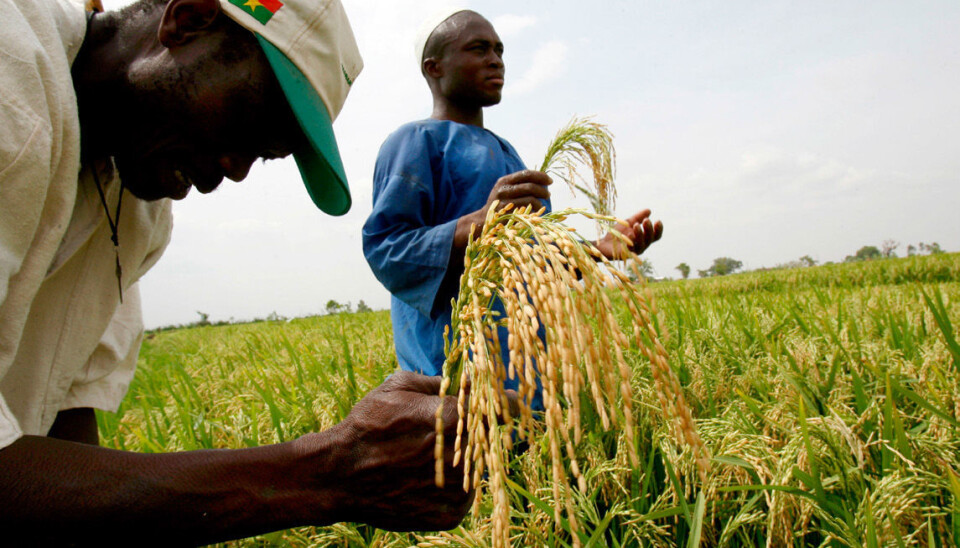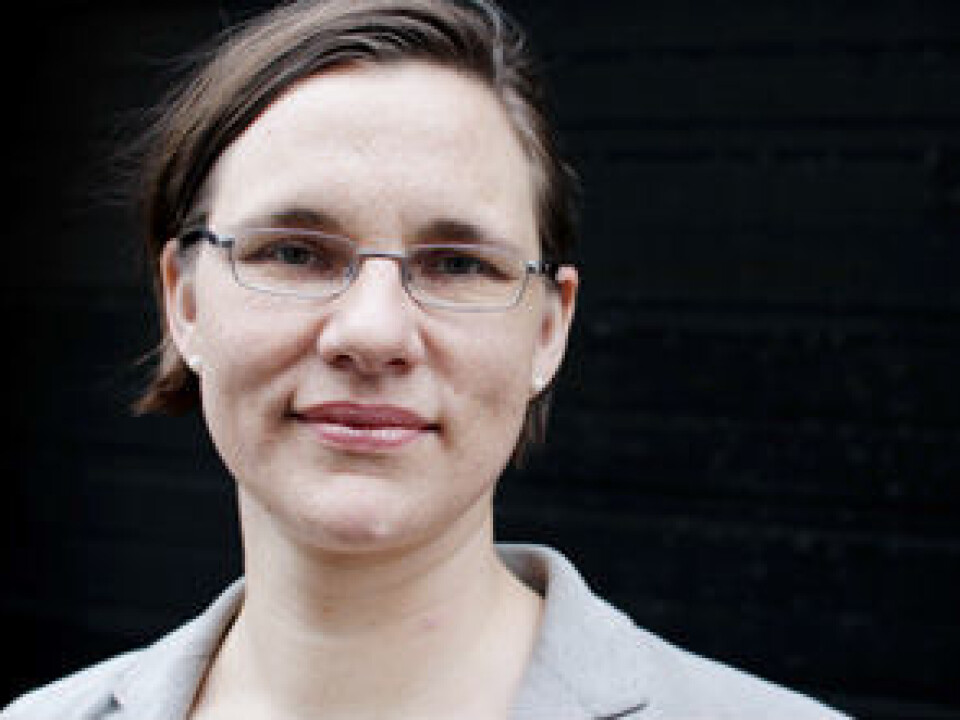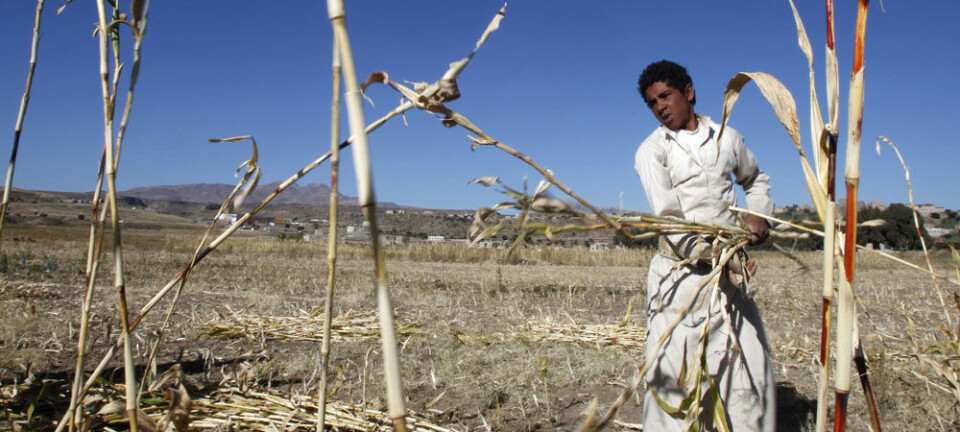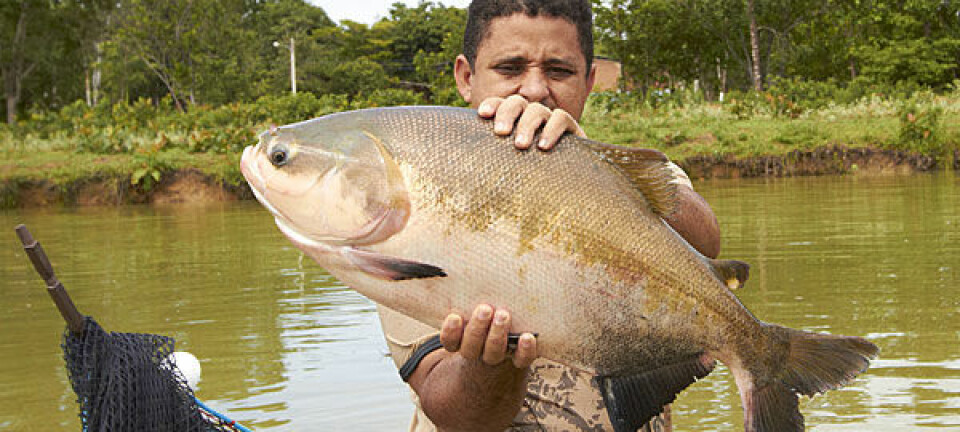This article was produced and financed by University of Bergen

Predicting future food crises
Climate change threatens world food supplies. Researcher uses simulators to see how these changes affect food systems.
Denne artikkelen er over ti år gammel og kan inneholde utdatert informasjon.
The global community faces a major challenge in providing enough food to feed a growing and more demanding world population.
“Climate change makes this as an even greater challenge. Both poor and rich countries are becoming more vulnerable when it comes to food security,” says Birgit Kopainsky, a System Dynamics researcher at the University of Bergen’s (UiB) Department of Geography.
From Switzerland to Burkina Faso
Kopainsky, who is Swiss and has a background from the ETH Zurich University, has recently studied how climate change will affect food supply in Burkina Faso, a land-locked country in the Sahel region of Western Africa. Close to 18 million people in this country live on the edge of existence.
Like many other African countries, Burkina Faso has a mainly rural population and 90 per cent of the total economically active population works in agriculture. Most of them are small-scale farmers who produce food for family consumption, with little or no opportunity to build up financial reserves.

Burkina Faso and its neighbours are situated in an area extremely exposed to global climate change. Droughts, floods and extreme temperatures already ravage the region.
“Even small changes in temperature and precipitation can have an enormous impact on the population of the Sahel,” explains the Swiss national.
A vicious cycle
Higher temperatures lead to more drought and floods, which then affect vegetation and destroy the topsoil. Freshwater for both human consumption and the irrigation of fields is lost. New diseases can attack animals, plants and humans. Infrastructure may be affected and deteriorating public health can influence overall food production.
“If food production drops, it will become even harder to adapt farming to climate change. This will increase the competition between the financial needs for adaptation and those for the provision of other government services such as education, public health and infrastructure,” suggests Kopainsky.
Simulating climate changes
Kopainsky has been collaborating with the Millennium Institute in Washington DC on developing a model to determine how climate change will hit Burkina Faso. This is part of the African country’s national plan to tackle climate change.
Using different climate change scenarios, the model can simulate how various sectors, such as agriculture or forestry, are affected. This data can then be used to assess the impact on sectors such as health and infrastructure – the hope being that government will know when and where to implement the necessary measures to prevent food shortages.
“We can also calculate the most cost-effective measures to tackle climate change,” she says.
Kopainsky assesses the impacts of future scenarios for climate change in a way not dissimilar to pilots using flight simulators for practice to test difficult flying conditions. But Kopainsky’s worst case scenarios are more scary than any flight simulator.
“We think locally, but always have the global in mind when developing our models. Our model for Burkina Faso is relatable to a category of problems that the rest of the Sahel and indeed Africa can learn from,” she explains.
“The model is a tool to assist decision makers. We provide the arguments, but the politicians need to make the final decisions.”
The measures suggested by these models will have a price tag of roughly 15 per cent of the potential damages of climate change.
“But when people are starving here and now, it is hard for local authorities to prioritise long-term climate measures, the results of which we may not see before 10 or 20 years from now,” she says pointing out that things are further complicated by the fact that funding needs to come from outside the impoverished country.
Listen to the locals
Kopainsky also visited Zambia, where she interviewed local farmers about their understanding of adaptive practices to climate change. Her goal is to create even better models for decision support and make the knowledge gathered from these models more relevant for farmers and other stakeholders in the food production system.
“Money is not enough to succeed with adaptation to climate change. You need to be in line with local people and understand their train of thought. After all, they are the ones who must adapt,” she explains.
“The last thing local farmers need is top-down policies. What they need are solutions that are consistent with their own cultural norms, resources and goals.”
From Burkina Faso to Switzerland
Kopainsky believes that the Burkina Faso model in principle can be employed anywhere, with local adaptions – even in her native Switzerland.
Switzerland is among the world’s ten richest and Burkina Faso among the world’s ten poorest countries, according to the United Nations’ Human Development Index (HDI), yet they have more in common regarding food production than first meets the eye.
“For different reasons both countries experience population growth at the same time as agricultural land is lost. The solutions for these two countries, however, couldn’t be more different,” says Birgit Kopainsky

































